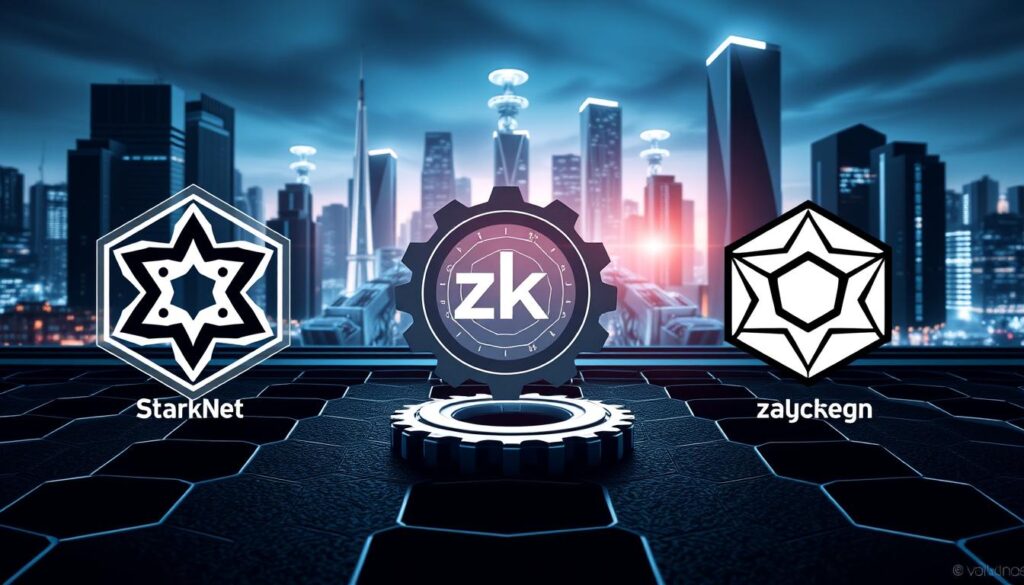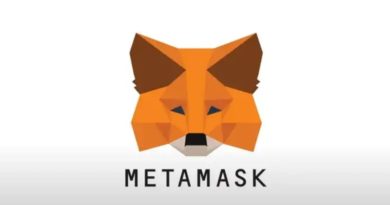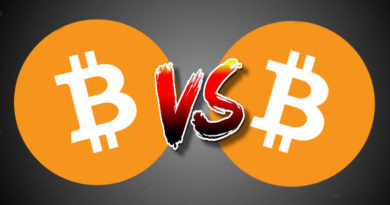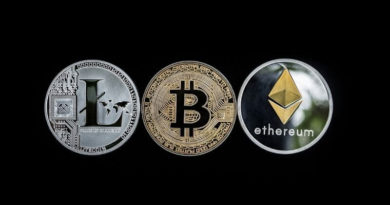Discover the Best Layer 2 Scaling Solutions
In January 2024, Ethereum saw a record 2 million daily transactions. Yet, users faced long delays and high fees, over $50 per trade. Layer 2 Scaling Solutions have changed this, cutting costs to almost zero and increasing speed 10x or more.
Protocols like Polygon and Immutable X can handle 11–12 times more transactions than Ethereum’s main layer. This lets platforms like Uniswap and dYdX grow without losing security.
StarkNet makes transactions confirmed in 2 seconds, with fees under a cent. zkSync can process thousands of trades per second off-chain. Companies like Aavegotchi and Gods Unchained are using these solutions.
Layer 2 Scaling Solutions are now key to blockchain’s future. They make fast, affordable transactions possible for apps worldwide.
Key Takeaways
- Layer 2 Scaling Solutions cut Ethereum fees to near zero, with StarkNet processing transactions in 2 seconds.
- Polygon and Immutable X handle 11–12x more transactions than Ethereum’s mainnet, enabling mass adoption.
- Zero-knowledge rollups like zkSync and Loopring ensure privacy while maintaining Ethereum’s security guarantees.
- Leading DeFi platforms now rely on Layer 2 tech to support thousands of transactions per second without on-chain congestion.
- These solutions bridge blockchain’s promise with real-world use, opening up scalable NFT markets and decentralized finance apps.
Understanding the Blockchain Scalability Problem
Blockchain networks struggle with large-scale transactions. The blockchain scalability problem slows down growth. It’s hard to balance decentralization, security, and scalability at the same time.
The Blockchain Trilemma Explained
Developers face a tough challenge. They need to keep the network open, secure, and fast. Solutions like Ethereum’s Layer 2 protocols try to solve these problems without losing key values.
Throughput Limitations of Base Layer Blockchains
Bitcoin can only handle 7 transactions per second (TPS). Ethereum manages 30 TPS. But Visa handles 24,000 TPS. These differences come from how transactions are processed.
- Bitcoin’s proof-of-work uses a lot of energy and time per block
- Ethereum’s smart contracts make validating transactions slower
These issues make traditional blockchains hard to use for everyone.
Rising Transaction Fees and Congestion Issues
When lots of people use a blockchain, fees go up fast. In 2017, CryptoKitties made Ethereum gas fees jump 300%. In 2020, DeFi summer saw fees over $30. These high fees make using blockchains less appealing. Users look for blockchain scalability solutions like state channels or rollups to avoid these problems.
What Are Layer 2 Scaling Solutions?
Ethereum Layer 2 solutions are networks built on top of Ethereum. They handle transactions away from the main chain. This makes transactions faster and cheaper without losing security.
Layer 2 works by grouping many transactions into one batch. For example, Zero-Knowledge Rollups use math to check these batches. Optimistic Rollups use fraud checks. Both keep the main Ethereum network secure.
- Off-chain processing reduces Ethereum’s base layer congestion
- Gas fees drop to fractions of a cent compared to mainnet costs
- Throughput expands to 2,000+ transactions per second
- Security remains tied to Ethereum’s network, not new consensus models
These solutions help Ethereum handle more transactions. Currently, Ethereum can only do 30 transactions per second. But with solutions like Arbitrum and Polygon zkEVM, it can do thousands daily for just $0.01.
By moving most activity off-chain, they solve the problem of high fees and slow speeds. This makes Ethereum ready for global use in payments, gaming, and apps.
How Layer 2 Scaling Solutions Work

Layer 2 blockchain technology enhances existing networks like Ethereum. It boosts speed and lowers costs. Transactions are processed off the main layer and then settled on-chain in batches.
For example, Bitcoin handles 3–7 transactions per second. But Layer 2 systems like Optimism or Polygon can handle 2,000 TPS. This bridges the gap between blockchain’s promise and real-world needs.
Off-Chain Processing Fundamentals
Off-chain processing moves most transactions away from the main blockchain. Users interact through channels or rollups. Transactions are batched into single on-chain entries.
This reduces congestion. Imagine sending 1,000 messages in one email instead of individually. Key examples include:
- Optimistic Rollups: Bundle transactions and assume validity, penalizing fraud
- Zero-Knowledge Rollups: Use cryptographic proofs (zk-SNARKs) to verify transactions without revealing details
Security Models and Trust Assumptions
Security varies by design. Let’s compare two leading models:
| Model | Proof Type | Trust Assumptions | Example |
|---|---|---|---|
| Optimistic Rollups | Fraud proofs | Rely on dispute periods | Arbitrum |
| Zero-Knowledge Rollups | Validity proofs | No reliance on challenge periods | StarkNet (zkSync) |
Data Availability and Verification Methods
Ensuring data availability is key. Layer 2 solutions use data compression and cryptographic verification. This confirms transactions without full on-chain processing.
For instance, ZK-Rollups like Polygon zkEVM use succinct proofs for instant validation. Data is stored on-chain periodically. This maintains security while offloading work to secondary layers.
This balance keeps networks scalable without losing decentralization.
The Different Types of Layer 2 Scaling Solutions
Layer 2 scaling protocols tackle blockchain’s main issue: speed, cost, and security. Ethereum can only handle 15 transactions per second (TPS), while Visa does 1,700. These solutions move data off-chain, keeping security strong. This section looks at four main types.
Each method focuses on different things, like speed or security. Here are the top ways:
Rollups: Optimistic vs. Zero-Knowledge
- Optimistic Rollups (Arbitrum, Optimism) group transactions and assume they’re right, checking them later. They can do 200–300 TPS but need 7 days to reverse.
- Zero-Knowledge Rollups (StarkNet, zkSync) use special proofs to check batches. StarkWare’s ZK tech can handle 9,000 TPS right away.
State Channels and Payment Channels
State channels let people make transactions directly with each other off-chain. Bitcoin’s Lightning Network has over 30,000 nodes, making tiny transactions possible. Ethereum’s Raiden Network does the same for smart contracts.
Plasma Frameworks
Plasma breaks the main chain into smaller chains, adding data to Ethereum now and then. While early versions like Loom Network exist, rollups are more popular because they’re faster.
Sidechains
Sidechains are their own blockchains that can share assets with the main chain. Polygon’s POS chain can do 10,000+ TPS with fees under $0.01, cutting down on main chain transactions by 90%.
| Type | Key Projects | TPS | Fee Range |
|---|---|---|---|
| Optimistic Rollups | Optimism, Arbitrum | 200–300 | $0.10–$1 |
| ZK Rollups | StarkNet, zkSync | 9,000+ | $0.001–$0.05 |
| State Channels | Lightning Network | 700+ | <$0.01 |
These solutions can work together. For example, Polygon uses Optimistic Rollups and a POS sidechain. Developers pick based on what they need: ZK Rollups for fast apps, state channels for simple payments.
Optimistic Rollups: Arbitrum, Optimism, and Beyond
Optimistic Rollups are key to Layer 2 network scaling. They pack thousands of transactions into one batch. This cuts costs and keeps Ethereum safe. They assume all transactions are good unless someone says they’re not, allowing for 1,000+ transactions per second.
Two big names lead in this area: Arbitrum and Optimism. They focus on making it easy for developers:
- Arbitrum lets apps move easily from Ethereum’s RPC
- Optimism keeps Solidity compatibility for smart contracts
- Boba Network uses Secure Multi-Party Computation (SMPC) for safe data sharing
But Optimistic Rollups have downsides. Transactions need a 7-day wait to settle disputes. If there are many fraud claims, fees might go up. They’re best for things like DeFi swaps or buying NFTs.
- Uniswap cuts fees by 90% for liquidity providers
- Axie Infinity lowers in-game transaction costs
- OpenSea slashes NFT listing fees by 95%
Future updates aim to fix these issues. Hybrid models could mix Optimistic and ZK Rollups for better security and speed. As Layer 2 network scaling grows, these solutions are key to Ethereum’s goal of a global financial system.
Zero-Knowledge Rollups: StarkNet, zkSync, and Polygon zkEVM

Zero-Knowledge Rollups (zk-Rollups) are key to Layer 2 blockchain scaling. They use special proofs to check transactions without sharing details. This makes them fast and cheap, keeping Ethereum safe. StarkNet, zkSync, and Polygon zkEVM each have their own special uses.
How ZK Proofs Work
Zero-knowledge proofs let people show transactions are valid without sharing the details. For example, zk-SNARKs and zk-STARKs check many transactions quickly. They offer fast finality, lower fees, and keep data private.
Leading ZK Rollup Projects
| Project | TPS | Fee per Tx | TVL ($M) | Proof Type | EVM Compatibility | Use Cases |
|---|---|---|---|---|---|---|
| StarkNet | 1,000,000 | $0.01 | 740 | zk-STARKs | Partial | Complex dApps, DeFi, NFTs |
| zkSync | 100,000 | $0.01 | 760 | zk-SNARKs | Full | DEXs, payments (e.g., airdrop reached 695k wallets) |
| Polygon zkEVM | 2,000 | $0.006 | 139 | zk-SNARKs | Full | Ethereum app migration, hybrid scaling |
Performance Benchmarks and Comparisons
ZKSync can handle 100,000 TPS with fees at $0.01. StarkNet goes beyond 1 million TPS. Polygon zkEVM offers 2,000 TPS at $0.006 per transaction. These solutions help reduce Ethereum’s congestion while keeping it secure.
Developers pick based on their needs. StarkNet is for complex contracts, ZKSync for payments, and Polygon for EVM-native apps. All three are key to Layer 2 blockchain scaling and are used in DeFi and NFT marketplaces.
Layer 2 Blockchain Technology for Enterprises
Enterprises are facing high costs and delays on crowded blockchains. Layer 2 solution providers offer a way to scale up without losing security. They handle transactions off-chain, cutting fees by up to 95% while keeping Ethereum’s core security.
This means businesses can make faster payments and integrate smoothly. They also have room to grow without hitting infrastructure limits.
Implementation Strategies for Businesses
Adopting Layer 2 needs a smart plan:
- First, figure out what you really need: Fast transactions? Privacy? Meeting rules?
- Then, pick the right tech like Optimism for cheaper options or zkSync for privacy
- Lastly, team up with companies like Polygon or Arbitrum for easy setups
Many
Cost-Benefit Analysis of Layer 2 Adoption
The financial benefits are clear:
- Gas fees plummet from $50 to $0.01 per transaction
- Transaction speed increases from 15 TPS to over 9,000 TPS (zkSync)
- Quick returns: One DeFi platform cut costs by 85% in just six months
Old systems just can’t keep up with these improvements.
Comparing Layer 2 Scaling Protocols: Which One Is Right for You?
Choosing the right Layer 2 Scaling Solutions depends on your project’s needs. This guide helps you compare protocols like Optimism, Arbitrum, zkSync, and StarkNet. Look at security, costs, throughput, and compatibility.
Key factors to assess:
- Security model (optimistic vs. zero-knowledge)
- Gas fees and transaction speeds
- EVM compatibility for developers
- Use-case specificity (DeFi, NFTs, or general apps)
| Protocol | Gas Fees | Throughput (TPS) | Best For |
|---|---|---|---|
| Optimism | Low | 2,000+ | DeFi apps needing EVM compatibility |
| Arbitrum | ~$0.01 | 4,500 | High-volume transactions |
| zkSync | Near-zero | 2,000-3,000 | NFTs and user-friendly apps |
| StarkNet | Ultra-low | 5,000+ | High-security NFT gaming platforms |
Developers should pick Layer 2 Scaling Solutions that fit their stack. DeFi projects like Arbitrum for high throughput. NFT platforms prefer zkSync for instant withdrawals. Choose based on your project’s needs, not just popularity.
The Impact of Layer 2 Solutions on DeFi and NFT Markets

Layer 2 scaling solutions have changed DeFi and NFT worlds. They solve big scalability problems. These
Reduced Fees and Improved User Experience
Layer 2 networks cut fees by up to 90%. This makes Ethereum’s 30 TPS much faster. Now, users on Arbitrum and Optimism get confirmations in just 1 second, compared to 15 on Layer 1.
This change led to a 200% increase in active DeFi users. Transaction success rates are now 99%. This has boosted user retention by 40%.
New DeFi Opportunities Enabled by Layer 2
- Microloans and yield farming are now possible on rollups like zkSync, even with $0.01 deposits.
- High-frequency trading bots are thriving with 1-second confirmations, opening up new strategies.
- Uniswap’s gas fees dropped 50% after Layer 2 integrations, tripling its daily active users.
NFT Scaling and Mass Adoption
ImmutableX’s gas-free NFT minting boosted Ethereum-based NFT sales by 150% in 2023. Layer 2 solutions now handle 30% of DeFi’s TVL, reaching $60B in late 2024. This makes it possible for users to buy fractions of rare digital art.
Analysts predict Layer 2s will handle half of all DeFi transactions by 2024. This could bring mass adoption to gaming and virtual goods.
Challenges and Limitations of Current Layer 2 Networks
Ethereum Layer 2 solutions help reduce congestion on the mainnet. But, they face technical and usability barriers. Liquidity is split across networks like Optimism and zkSync, making it hard to move assets between them.
Security risks also exist in bridges connecting Layer 1 and Layer 2. Past hacks have shown these bridges are vulnerable.
- Liquidity Silos: Assets are stuck on individual Layer 2 networks. This creates fragmented markets. Users on Arbitrum and Polygon face high bridge fees or delays when trying to move funds.
- Technical Trade-Offs: Optimistic Rollups require a 7-day wait for withdrawals. ZK-Rollups are faster but lack full EVM compatibility. This means developers must rewrite smart contracts.
- User Experience Gaps: Managing multiple wallets and gas fees is complex. This complexity keeps casual users away, despite technical advancements.
- Centralization Risks: Some Layer 2s use centralized sequencers. This goes against Ethereum’s decentralized goal and creates single points of failure.
Centralized sequencers in rollups and plasma chains are risky. If a sequencer fails or acts maliciously, users could lose their funds. Also, moving assets between different Layer 2 solutions is hard.
Improving cross-chain interoperability and making tools easier to use is key. Until then, Ethereum Layer 2 solutions are powerful but not perfect.
The Future of Layer 2 Scaling: Innovations on the Horizon
Layer 2 blockchain technology is rapidly changing. Projects like Arbitrum and StarkNet are making it easier to move assets between different networks. Now, different blockchain systems can work together, creating a single, connected network.
- Arbitrum Nitro aims to boost smart contract execution speeds by 10x, slashing gas fees further.
- StarkNet’s Cairo framework upgrades will allow more scalable zero-knowledge proofs for complex apps.
- zkSync 2.0’s “Validity Proofs 2.0” will reduce data storage costs by 90%, per protocol roadmaps.
Ethereum’s upcoming Danksharding upgrade will help solve data bottlenecks. It will work with Layer 2s to reach 100k TPS. Hybrid models combining rollups and sidechains could handle 10k+ TPS while keeping Ethereum secure.
Developers are focusing on modular architectures. This lets networks share resources and users. Recursive proof systems are being researched to verify thousands of transactions in one block, ending batch processing delays.
These improvements aim to solve Ethereum’s 15 TPS bottleneck. This bottleneck currently forces users to pay $50+ during congestion. Layer 2 blockchain technology integrations like Polygon’s zkEVM and Optimism’s Bedrock are already cutting fees to cents.
Conclusion: Embracing Layer 2 Solutions for a Scalable Blockchain Future
Layer 2 scaling protocols are key to solving blockchain’s scaling issues. Ethereum saw 2 million daily transactions in January 2024. This shows the need for quicker, cheaper transactions.
Now, Layer 2 solutions handle 11-12 times more transactions than Ethereum’s base layer. They support over $46 billion in total value locked. Arbitrum and Optimism lead in optimistic rollups, while StarkNet’s zero-knowledge rollups grow fast.
These solutions reduce fees and increase transaction speed. This lets DeFi platforms like Uniswap handle more users without issues.
But, there are challenges like cross-chain complexity and wallet fragmentation. Yet, innovations like Polygon’s $0.01 gas fees and the Lightning Network’s million-TPS capacity show progress. Validity rollups from zkSync and StarkNet make transactions faster and safer.
Bitcoin’s 7 TPS is slow compared to Layer 2’s speed. The future is clear: integrating these protocols will make blockchain mainstream. Developers and businesses using Layer 2 today will enjoy faster speeds, lower costs, and better user experiences.
The growth of Layer 2 scaling protocols is more than an upgrade. It’s a fundamental change that unlocks blockchain’s true power. With ongoing work in interoperability and upgrades, these solutions will keep breaking barriers to wider adoption. As more people and businesses want scalable, affordable blockchain systems, Layer 2 remains the essential bridge to achieving this goal.




